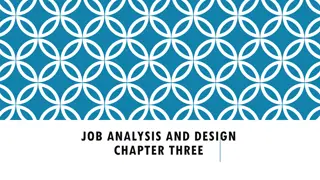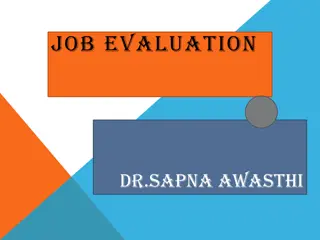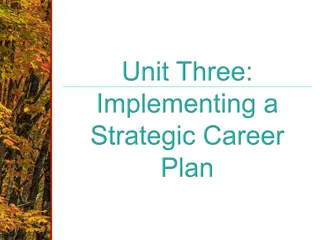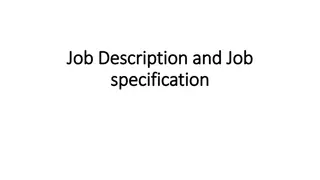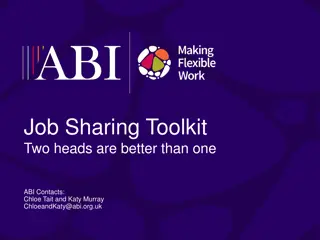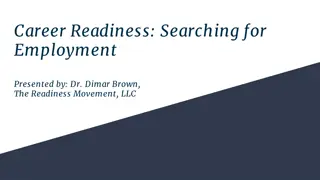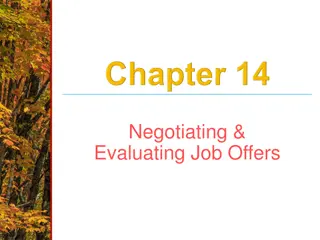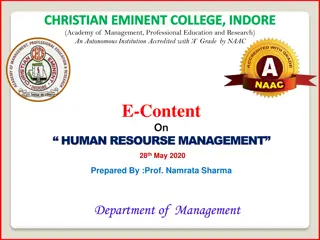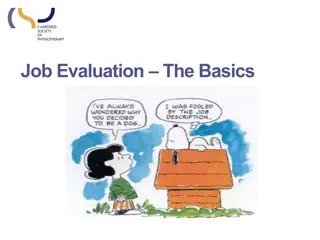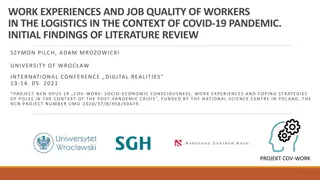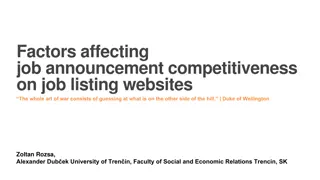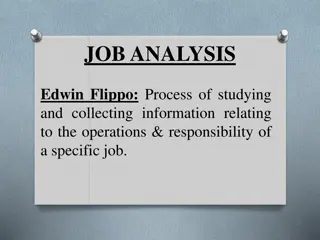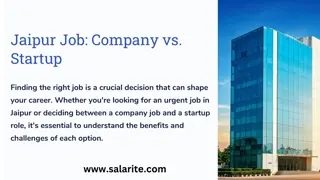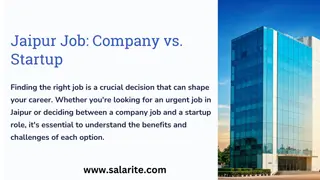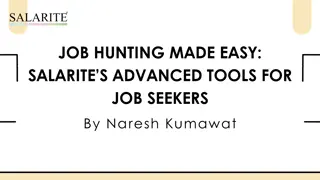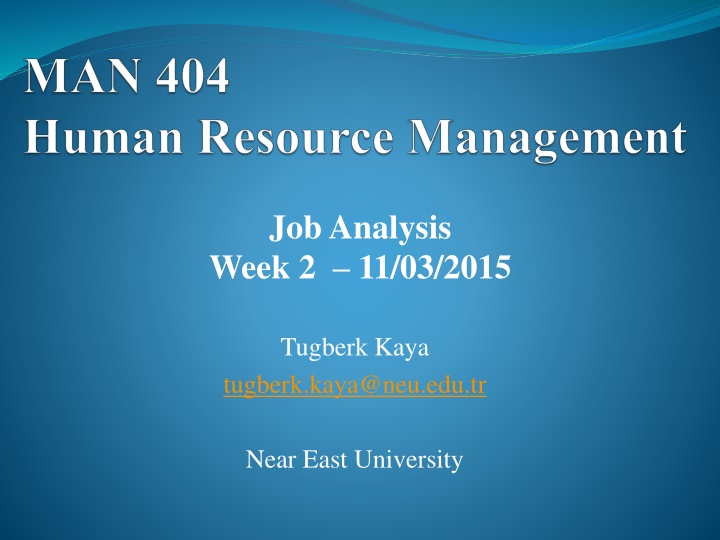
Essential Insights into Job Analysis and HR Management
Explore the significance of job analysis in HR management, covering key activities, HR functions, old vs. new employment models, globalisation impacts, and the importance of strategic HRM. Understand job description, job specifications, and the role of HR managers in collecting vital information for effective workforce planning.
Download Presentation

Please find below an Image/Link to download the presentation.
The content on the website is provided AS IS for your information and personal use only. It may not be sold, licensed, or shared on other websites without obtaining consent from the author. If you encounter any issues during the download, it is possible that the publisher has removed the file from their server.
You are allowed to download the files provided on this website for personal or commercial use, subject to the condition that they are used lawfully. All files are the property of their respective owners.
The content on the website is provided AS IS for your information and personal use only. It may not be sold, licensed, or shared on other websites without obtaining consent from the author.
E N D
Presentation Transcript
Job Analysis Week 2 11/03/2015 Tugberk Kaya tugberk.kaya@neu.edu.tr Near East University
Recap Four Key Activities of HRM; 1. Selection 2. Performance Management 3. Reward 4. Development Group Formation 1.Forming 2.Storming 3. Norming 4. Performing (Fombrum, Tichy, Devanna 1984) (Tuckman and Jensen 1977).
Recap HR is important; In order to prevent hiring the wrong person for the job Prevent high turnover Increase efficiency of your employees. Provide development/training opportunities for your employees.
Recap Old Employment Model New Employment Model Flexible Low Conflict High Performance Inflexible High Conflict Low Productivity
Recap Globalisation: -Sales Expansion -Cheap Labour Force -Partnerships Human Capital; refers to the knowledge, education, training, skills and expertise of a firm s workers
Recap Strategic HRM; Aims to create High-Performance Work System. An integrated set of HRM policies and practices that together produce superior employee performance. HR Manager Proficiencies; HR Proficiencies Business Proficiencies Leadership Continuous Learning
Job Analysis The procedure for determining the duties and skill requirements of a job and the kind of person who should be hired for. Why Job Analysis is required? In order to produce information used for job description and job specifications.
Definitions Job Description: A list of a job s duties, responsibilities, reporting relationships, working conditions, and supervisory responsibilities. Job Specifications: A list of a job s human requirements, required education, skills and personality.
Functions of HR Manager By job analysis HR Manager collets following information; Work activities Human Behaviours Machines, tools, equipment and work aids Performance standards Job context Human Requirements
Why job analysis is important? Recruitment and Selection Compensation Training Performance Appraisal Discovering Unassigned Duties
Guidelines for Job Analysis Make sure HR Manager, the worker, and the worker s supervisor take part during the observation and analysis step. Collect information from several people who are familiar with the job. Make sure questions and surveys are clear and understandable.
Break -Complete Edmodo Questionnaire -Attendance
Methods for collecting Job Analysis Information The Interview Pros: Simple and Quick Verbal Information Cons: Misunderstanding Show off their duties.
Methods for collecting Job Analysis Information Questionnaires http://www.scccd.edu/Modules/ShowDocument.aspx?d ocumentid=3433 Participant Diary/Logs Internet-Based Job Analysis (Global Companies)
Job Descriptions 1. Job Identification 2. Job Summary 3. Responsibilities & Duties 4. Authority of incumbent 5. Standards of performance 6. Working conditions 7. Job specifications
Job Descriptions O*NET to create job descriptions. http://www.onetonline.org/ Dejobbing! http://www.youtube.com/watch?v=4oMsvqJ8_ws
Would you employ trained or untrained employee? Trained employees have the experience within the industry. Untrained employees can fit easily to the organizational culture.
Next Week: Make sure everyone has a presentation topic to present
References Dessler, G. (2008) Human Resource Management. 11th edn. Harlow: Pearson Education Ltd DEVANNA, M. A., FOMBRUN, C . and TICHY, N . (1984). 'A framework for strategic human resource management'. In Fombrun, C., Tichy, N. M. and Devanna, M. A. (Eds), Strategic Human Resources Management. New York: WUey. Mondy, R. (2005) Human Resource Management. Harlow: Pearson Education Ltd Tuckman and Jensen (1977); https://www.learning.ox.ac.uk/media/global/wwwadminoxacuk/localsites/oxfordlearninginstitute/documents/sup portresources/lecturersteachingstaff/developmentprogrammes/StagesinGroupDevelopment.pdf
Any Questions? tugberk.kaya@neu.edu.tr

